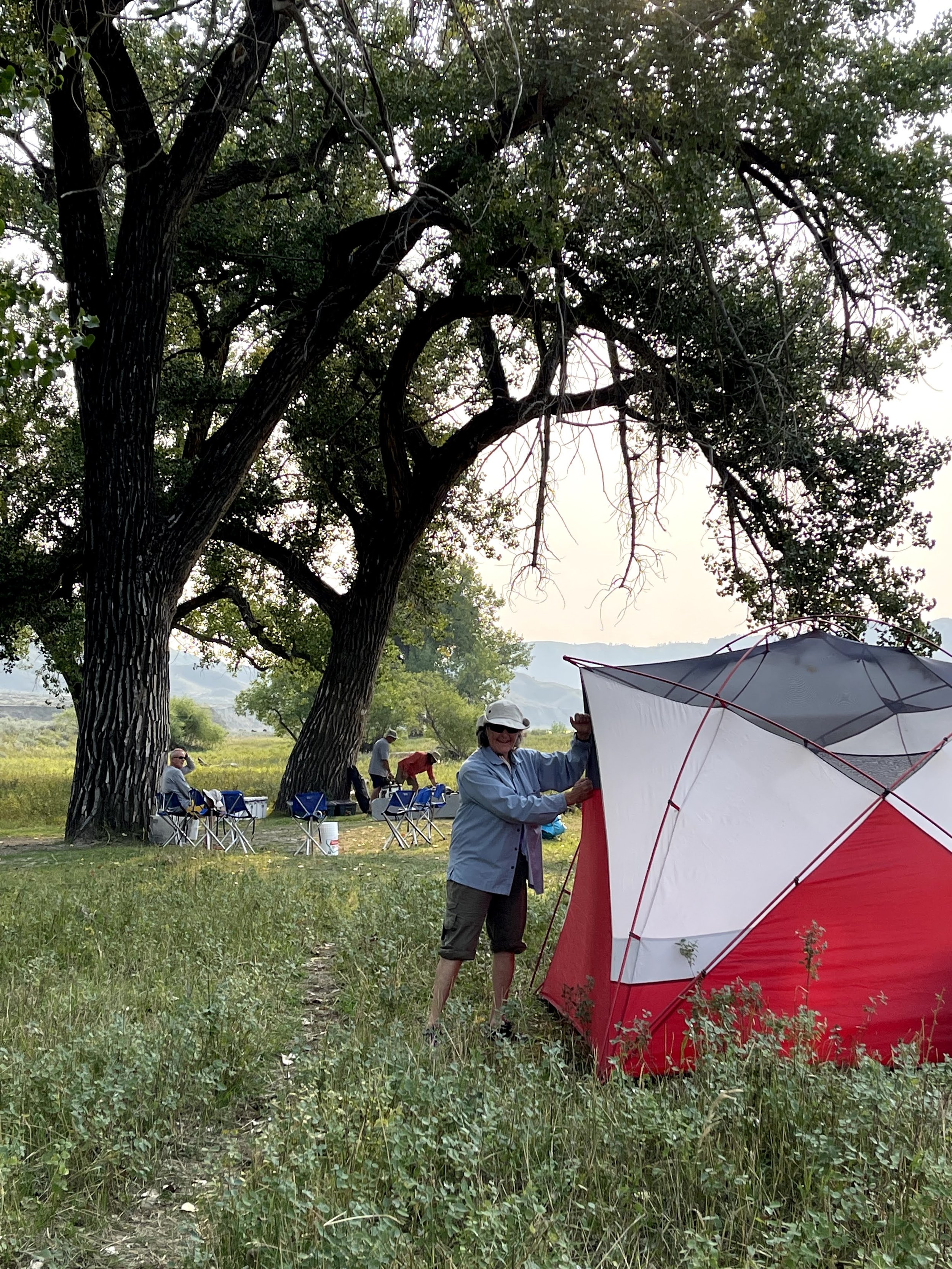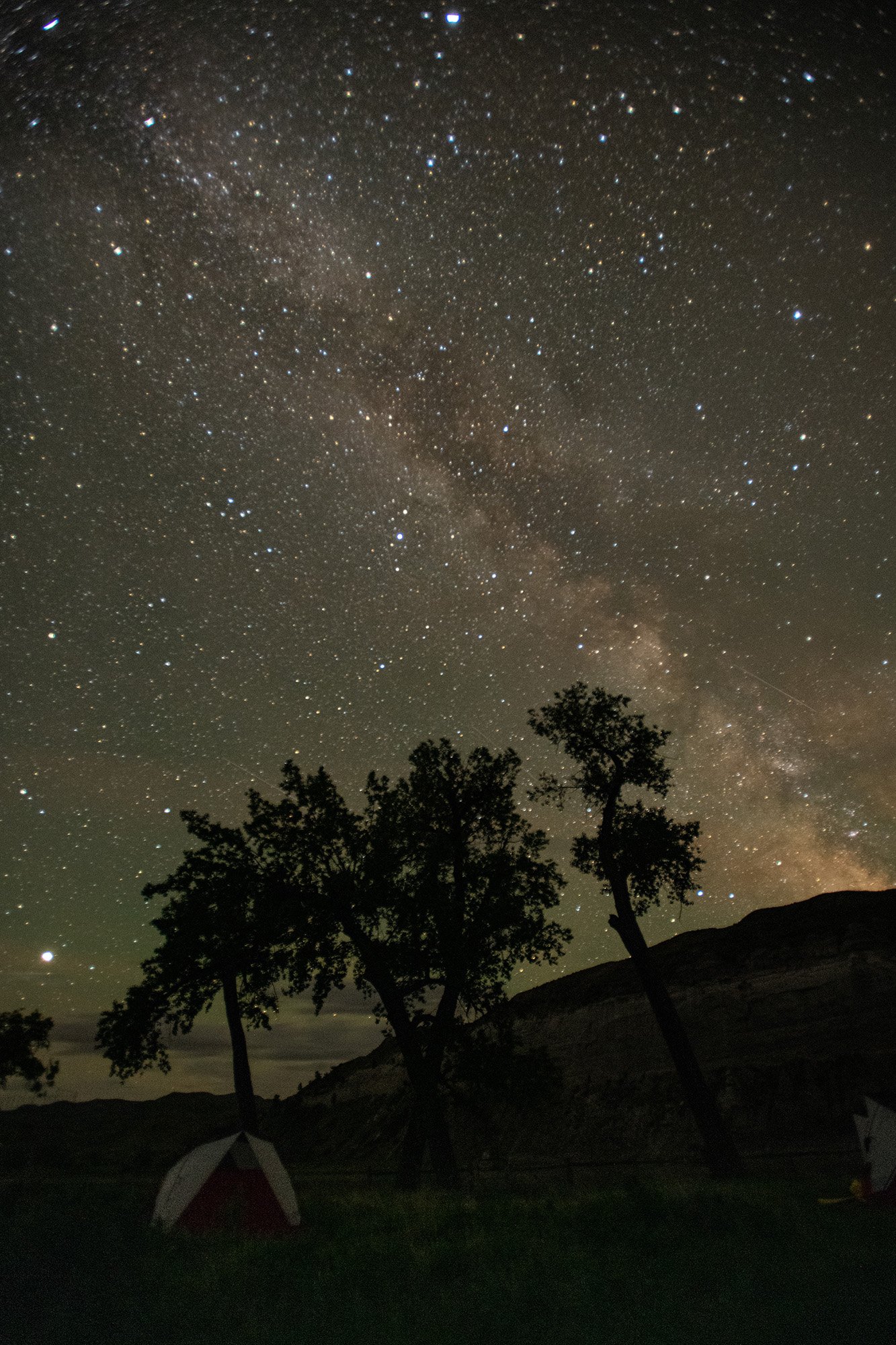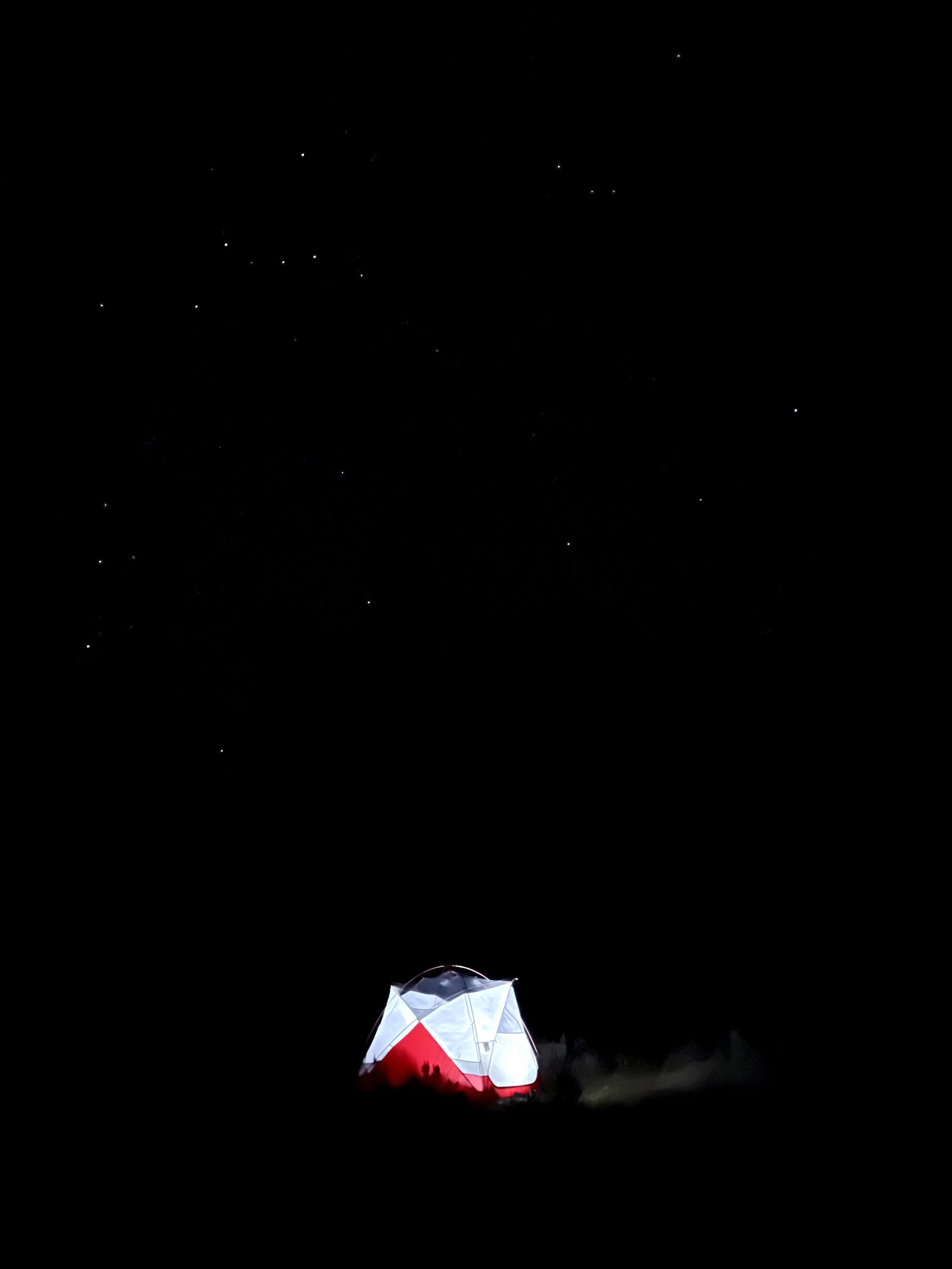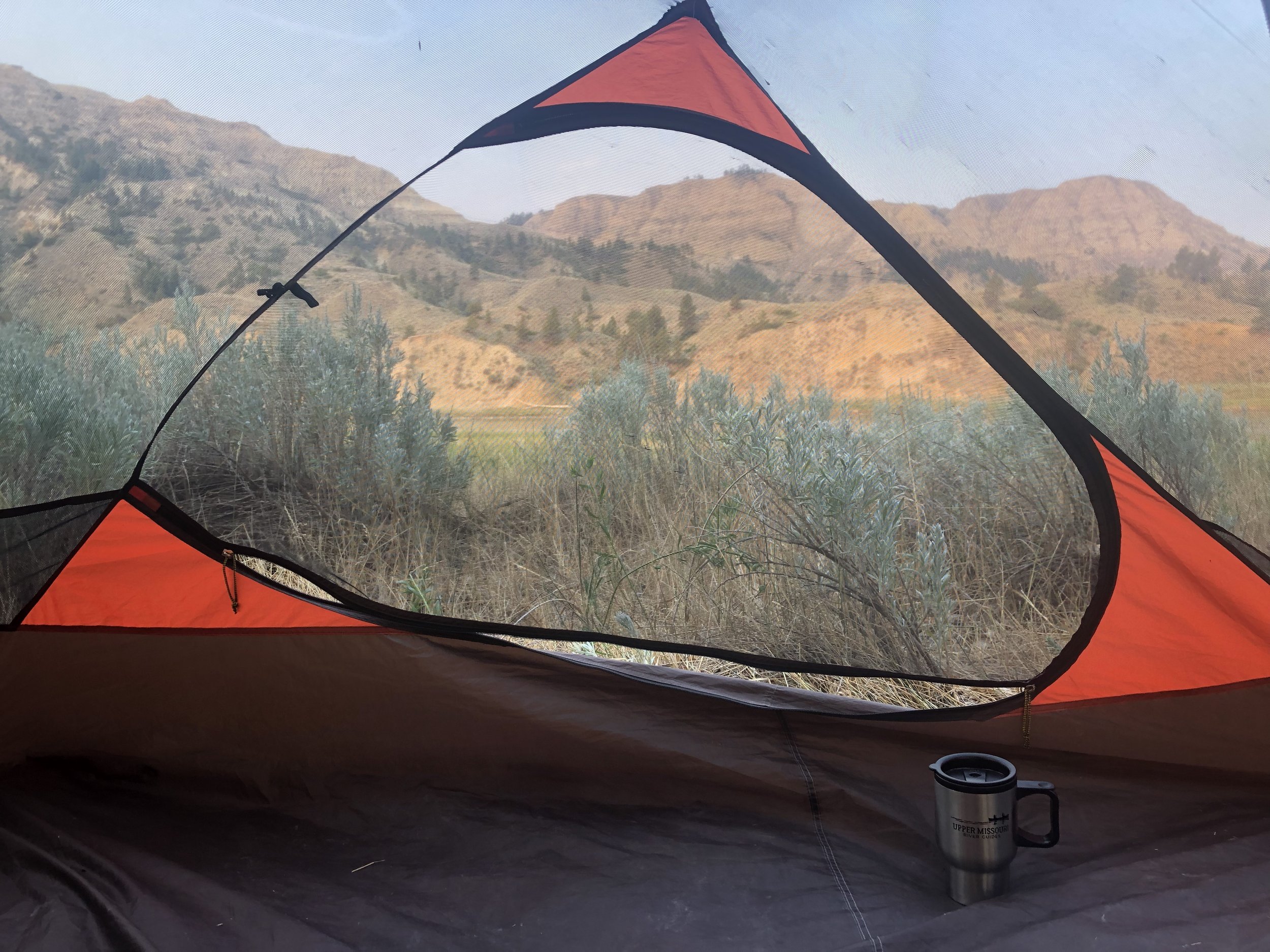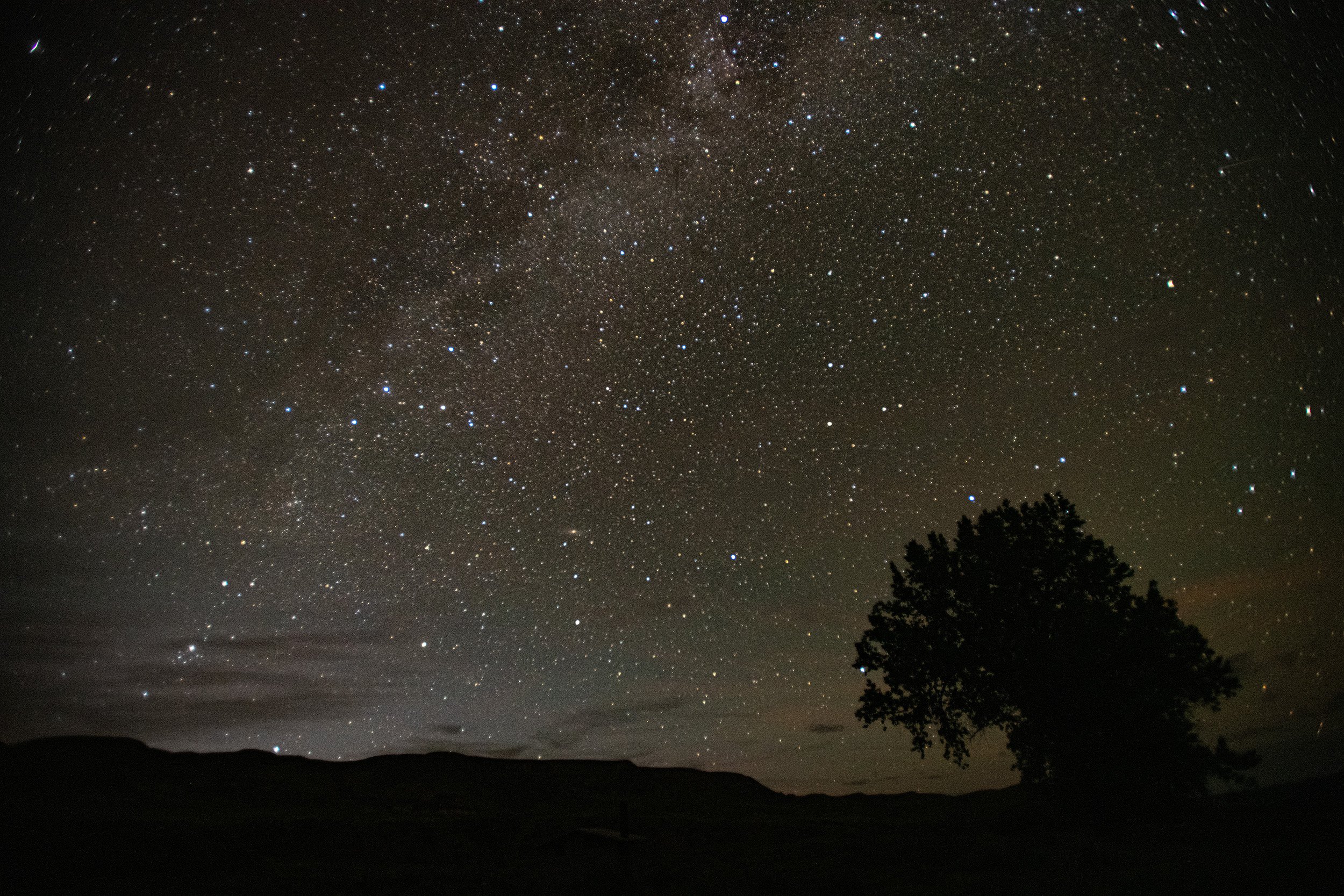Stargazing on the Upper Missouri River
Ah, that moment you finally lay down in your tent, snuggle in your sleeping bag, breathe deep and peer into the endless sea of flickering stars above. As the number of wild places shrinks in our world, so does the dark places. Light pollution is certainly a reality for most people. What is the best way to get away from the dull roar of city lights? Well, go camping in a wild, remote place! Thankfully, Montana still has lots of the aforementioned and coveted forests, rivers and protected public lands.
Whether you are an expert astronomer or simply enjoy the rapture of stargazing, the Upper Missouri River is one of the best places for both. Although we are technically down in a river corridor, the breadth of the sky is still extremely vast. And, if you like, at some campsites you can quickly walk up and out of the river corridor to the expansive prairie above. There is a reason Montana is called the “Big Sky State.”
Why do we recommend a canoe and camping adventure in the Upper Missouri River Breaks? Well, although we are fairly biased, we love this trip for several reasons. First, since the Missouri River is a flat water river, it’s accessible to all ages and ability levels. Do you want your grandkids to experience a few nights in a tent under the stars? This is the perfect trip for the whole family. Second, just a few miles down the river, you begin journeying into a very remote part of Montana. In fact, this portion of the Missouri River is designated a Wild and Scenic River, which means it is remote, very inaccessible by land and far away from civilization. Finally, one is able to experience the river much as the early explorers and inhabitants did - virtually unchanged, rugged and vast. This allows one to ‘journey’ back in time as well as vacation from the pressures of life and unplug from the constant drain of technology on our soul.
Light pollution map, courtesy of David Lorenz's Light Pollution Atlas 2020
Dark Sky Map
The image above displays the entire state of Montana. The area circled basically encompasses the Upper Missouri River Breaks National Monument and Charles M. Russell Wildlife Refuge. This massive area is very dark as indicated by the map. The long, narrow blue body of water pictured toward the right of the circle is Fort Peck Reservoir. We exit the river at James Kipp Recreation Area just about 10 miles before the slack water of this reservoir begins. In fact, this website, Go Astronomy, lists eight of the darkest places in Montana. The Upper Missouri River Breaks and the Charles M. Russell Wildlife Refuge are two of the eight places sited!
Stargazing and Sleeping Under the Stars
All of our tents feature extensive mesh for prime star gazing when we have clear skies!
For those traveling solo or those who wish to have their own tent, we use a variety of lightweight 2-3 person size tents. They are roomy with plenty of space to spread out. Our favorite brands include Alps, MSR, Kelty, Sierra Designs and more.
Couples, and Families or Friends who are bunking together: We primarily use the MSR Habitude 4 tent for couples and families. This tent comfortably houses 4 people, weighs only 12 pounds and has an interior peak height of over 6 feet. Yes, you can stand up in this tent to easily and comfortably get dressed. They are fun to set up and extremely high quality.
Find out more about our superior equipment:
Perseid Meteor Shower
The Perseid meteor shower happens every year and is visible between the months of July and August. This is certainly a highlight of our trips (if there is no full moon). This spectacular cosmic light show is dazzling and exciting. We love lounging in camp chairs with an evening drink or hot tea or, better yet, snuggled in our tent and allowing the night sky to entertain us. The meteor shower occurs as Earth passes through the path of Comet Swift-Tuttle from mid-July through the end of August. When there is no light from the moon to obscure the show, one can expect to see 100 meteors per hour at it’s peak. The shower peaks around the middle of August.
Moon Calendar
In order to star gaze, one must contend with the full moon. Although very spectacular in its own right, the light from the full moon does prevent optimal star gazing. Silver lining, however, is that when there is a full moon, it’s really easy to navigate to the bathroom :-) We recommend eyewear for those large full moons. The light can often be very bright all night!
You can find out the entire year’s moon calendar on this page: Moon Phases 2022 - Lunar Calendar.
During the summer (2022), the full moons will occur on: May 15, June 14, July 13, August 11 and September 10.
Thus the New Moon (darkest phase), will occur on: May 30, June 28, July 28, August 27 and September 25.
International Space Station
But, my absolute favorite night sky sighting: seeing the International Space Station fly overhead. To think that there are actual humans hurling through space as we get ready to crawl into our sleeping bags safely on dry land, breathing oxygen and wondering what is for breakfast is truly unfathomable. You can download an app on your phone that determines your location and tracks the flight path of the ISS so you are able to know exactly when it will be overhead.
Would you like to come stargazing with us? What is your favorite constellation? We also regularly see planets! Check out our summer schedule and determine if you would rather star gaze or experience the full moon over the water - both equally spectacular!


